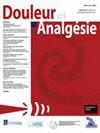Lysophosphatidylcholine 16:0, a Promising Biomarker for Severe Fibromyalgia
Q4 Medicine
引用次数: 1
Abstract
Fibromyalgia (FM) is a complex disease without any clear physiopathology, thus treating FM remains challenging for physicians. In this article Hung et al. propose a new mouse model of FM in which adult mice are exposed to repeated and intermittent sound stress (RISS). These stressors are shown to have an effect at the cellular level: leucocytes generate a high amount of reactive oxygen species (ROS), which triggers plasma lipid peroxidation and an excessive production of lysophosphatidylcholine (LPC) 16:0. LPC16:0 molecules then activate acid-sensing ion channel 3 (ASIC3) on muscle nociceptors, generating a central sensitization process responsible for the development of FM-like phenotypes (hyperalgesia, chronic fatigue, and anxiety). In the second part, a clinical investigation was performed on patients suffering from mild and severe FM. During the month preceding the study, FM patients perceived more daily stressors than healthy controls (HC). In severe FM patients, LPC16:0 levels are correlated with ongoing pain severity. This study suggests that LPC16:0 could be a biomarker for FM, particularly in its severe forms, and proposes to further investigate the effects of platelet-activating factor acetylhydrolase (PAF-AH) inhibitors such as darapladib on fibromyalgia. These molecules could prove to be interesting therapeutic compounds for the treatment of severe FM.溶血磷脂酰胆碱16:0:重度纤维肌痛的有希望的生物标志物
纤维肌痛(FM)是一种没有明确生理病理的复杂疾病,因此治疗FM对医生来说仍然是一个挑战。在这篇文章中,Hung等人提出了一种新的小鼠调频模型,在该模型中,成年小鼠暴露于重复和间歇性声应激(RISS)。这些应激源被证明在细胞水平上有影响:白细胞产生大量活性氧(ROS),从而引发血浆脂质过氧化和过量产生溶血磷脂酰胆碱(LPC) 16:0。LPC16:0分子随后激活肌肉痛觉感受器上的酸感离子通道3 (ASIC3),产生一个中枢致敏过程,负责fm样表型(痛觉过敏、慢性疲劳和焦虑)的发展。第二部分,对轻、重度FM患者进行临床调查。在研究前一个月,FM患者比健康对照组(HC)感受到更多的日常压力源。在严重的FM患者中,LPC16:0水平与持续的疼痛严重程度相关。本研究提示LPC16:0可能是FM的生物标志物,特别是在其严重形式时,并建议进一步研究血小板活化因子乙酰水解酶(PAF-AH)抑制剂如darapladib对纤维肌痛的影响。这些分子可能被证明是治疗严重FM的有趣的治疗化合物。
本文章由计算机程序翻译,如有差异,请以英文原文为准。
求助全文
约1分钟内获得全文
求助全文
来源期刊

Douleur Et Analgesie
医学-临床神经学
CiteScore
0.30
自引率
0.00%
发文量
17
审稿时长
>12 weeks
期刊介绍:
Douleur et Analgésie, première revue internationale francophone consacrée à la douleur, a été créée en 1988. De par la qualité scientifique et l’indépendance de ses publications, ce trimestriel a reçu d’emblée un accueil favorable auprès des chercheurs et cliniciens spécialisés dans le domaine. Á l’occasion de la reprise de la revue en 2006 par les Éditions Springer, le comité éditorial a souhaité s’ouvrir davantage à la francophonie, y compris nord américaine, pour mieux partager les connaissances et renforcer la valeur scientifique de la revue.
 求助内容:
求助内容: 应助结果提醒方式:
应助结果提醒方式:


